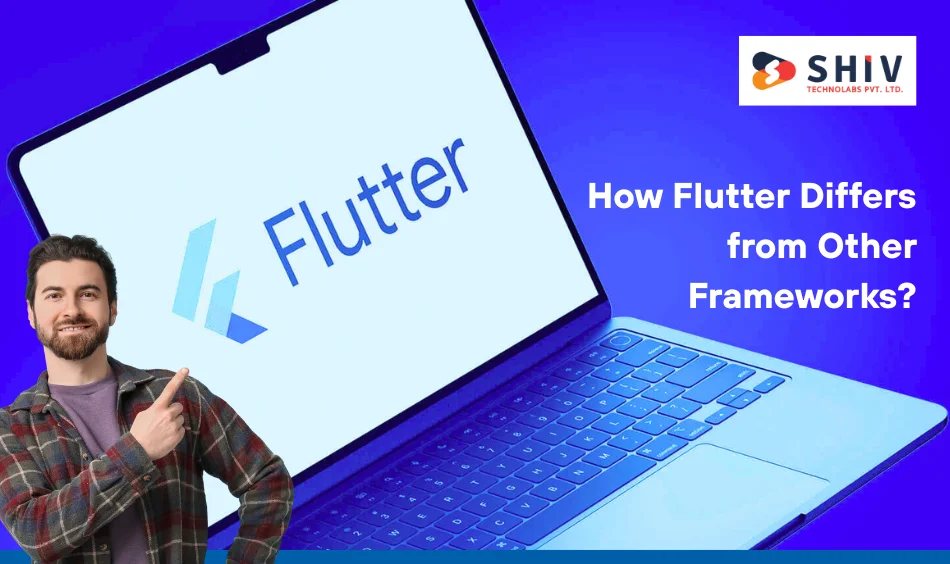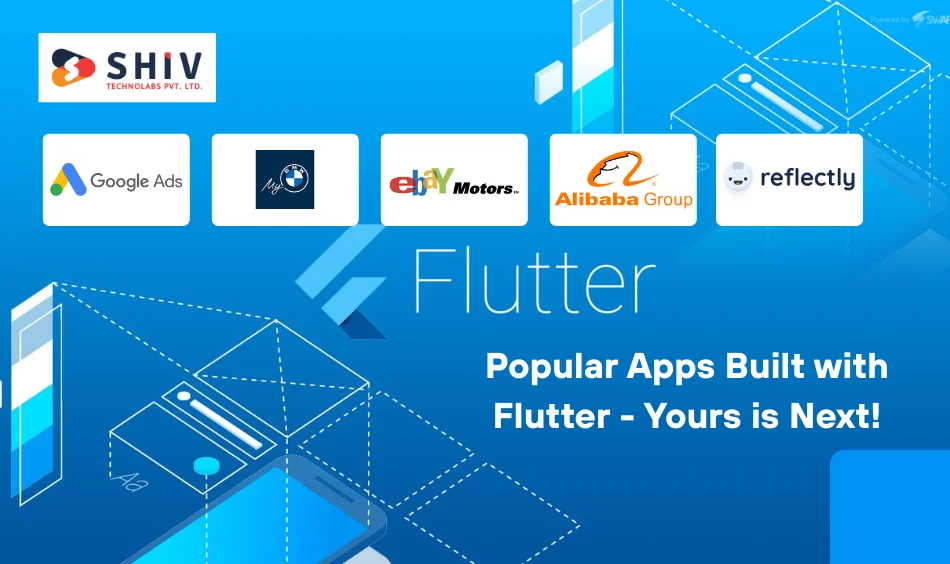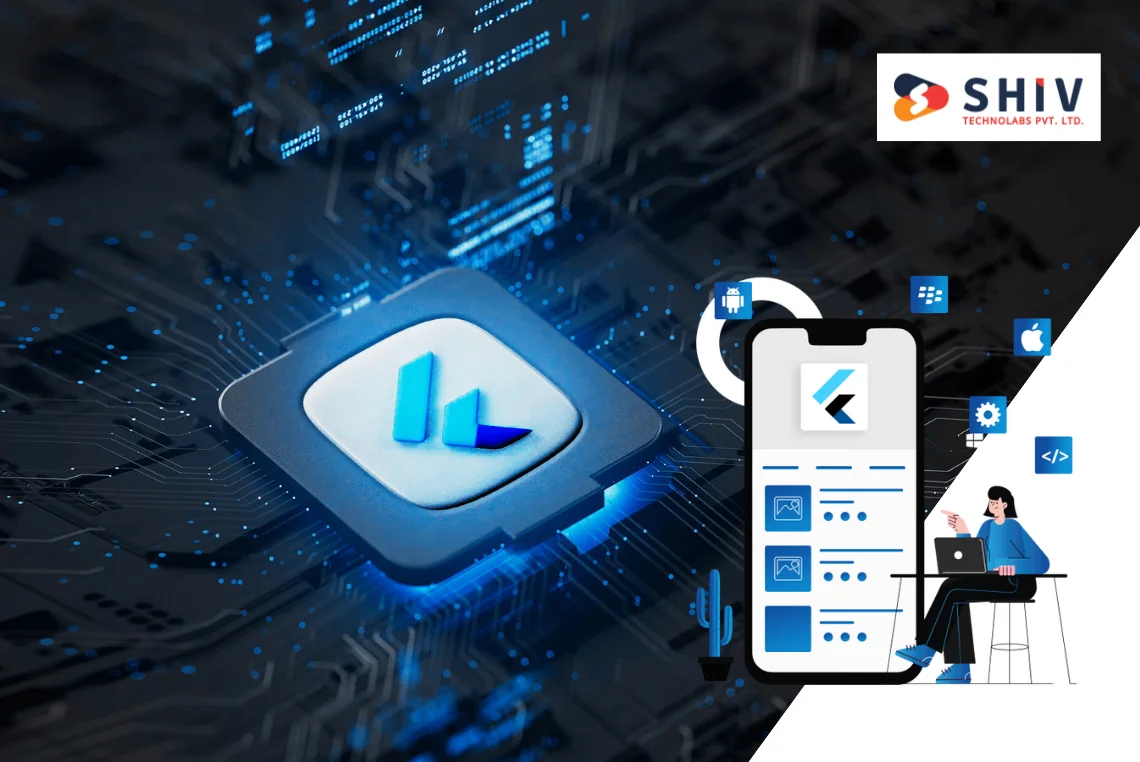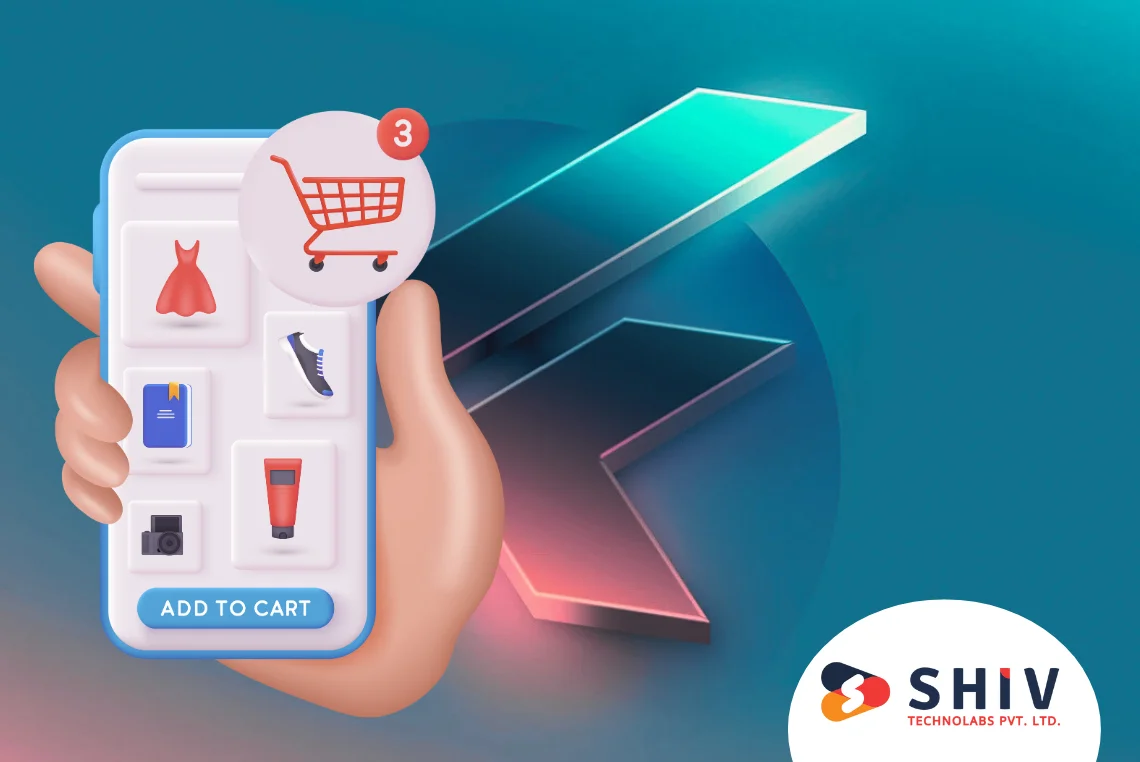Table of Contents
Cross-platform app development has seen massive growth in the past few years. Among the many frameworks available, Flutter has consistently stood out. It combines speed, reliability, and strong community backing — making it a preferred choice for startups and enterprises alike.
Developers continue to trust Flutter for delivering native-like performance with shorter build cycles. Whether building an MVP, a full-scale eCommerce platform, or an IoT-based mobile app, Flutter offers the flexibility to meet both design and performance expectations.
What is Flutter and Why Businesses Prefer It?
Flutter is an open-source UI framework developed by Google for building apps from a single codebase. It works with the Dart programming language and provides a wide range of pre-designed widgets to craft beautiful and functional interfaces.
Businesses prefer Flutter because it reduces development time and maintains consistency across Android, iOS, web, and desktop platforms. Its strong documentation, active community, and compatibility with third-party integrations make it a practical choice for companies looking to launch apps faster without sacrificing performance or design quality.
How Flutter Differs from Other Frameworks?

Flutter stands apart from frameworks like React Native, Kotlin, and Swift through its architecture, rendering engine, and speed of development. It focuses on consistency, efficiency, and near-native performance — all from a single codebase.
Key differences include:
- Direct Native Compilation: Flutter compiles into native ARM code instead of using JavaScript bridges. This reduces lag and gives smoother animations compared to React Native.
- Custom Rendering Engine: Instead of relying on system UI components, Flutter draws its own widgets using Skia. The result — uniform design across Android, iOS, and web.
- Hot Reload for Instant Changes: Developers can modify the code and view results instantly, making testing and iteration much faster than Swift or Kotlin-based projects.
- Consistent UI Across Devices: The same design looks identical everywhere, removing layout inconsistencies common in hybrid or native builds.
- Cost and Time Efficiency: With one codebase and faster debugging, Flutter cuts both development time and cost — ideal for startups and enterprises aiming for quicker releases.
8 Key Reasons to Use Flutter for App Development in 2025
Flutter continues to evolve as one of the most trusted cross-platform frameworks. Its ability to deliver fast, stable, and visually rich applications has made it a top choice among developers and businesses alike.
Below are the key reasons why Flutter remains the preferred option.
1) Single Codebase for All Platforms
Flutter lets teams ship Android, iOS, web, and desktop apps from one codebase. That means one set of widgets, one design system, and one testing strategy. You avoid duplicated tickets, parallel fixes, and diverging UX across platforms.
Feature rollout gets simpler: build once, run across devices with consistent behavior. Maintenance also gets easier because bug fixes and refactors land in one place.
For product owners, this reduces coordination overhead and speeds up release trains without sacrificing app quality.
2) Faster Time to Market
Pre-built widgets, declarative UI, and predictable state patterns cut design-to-delivery time. Designers hand off specs that developers mirror quickly with Material and Cupertino widgets. Hot reload (covered below) shortens feedback loops during UI polish and QA.
Teams move from prototype to pilot faster, gather real user feedback earlier, and adjust scope with fewer delays. This speed matters for MVPs, seasonal campaigns, and any release where first-mover advantage can shape adoption.
3) Rich UI and Flexible Widgets
Flutter renders every pixel with its own rendering engine, so your UI stays consistent across devices. You get fine-grained control over typography, motion, and layout, plus ready patterns like lists, tabs, bottom bars, slivers, and animations.
Need brand-first visuals? Compose custom widgets, extend themes, and build adaptive layouts for phones, tablets, and desktops.
Because UI is code (not platform views), interaction feels tight and animations remain smooth even on complex screens.
4) Native-Like Performance
Flutter compiles to native ARM code and draws directly with a hardware-accelerated renderer. There’s no JavaScript bridge in between UI and device features, which reduces overhead and jitter. The result: quick startup, steady frame rates, and fluid gestures.
You can also call platform-specific APIs through platform channels or FFI for performance-critical paths. For apps with heavy scrolling, media, or charts, this approach delivers the responsiveness users expect from native builds.
5) Hot Reload for Quick Updates
Hot reload injects code changes into a running app without a full restart. Designers and developers iterate side by side: tweak padding, colors, or animation curves and see results instantly, while preserving current state.
This speeds up UI polish, bug reproduction, and small feature experiments. During QA, it shortens the fix-verify cycle. Over a full project, these small time savings stack into meaningful schedule gains and cleaner releases.
6) Strong Community and Google Support
Flutter benefits from active contributors, frequent releases, and thorough docs. You’ll find packages for navigation, state management, payments, maps, analytics, media, charts, and more.
Community samples and issue threads reduce unknowns during architecture and debugging. Google’s backing keeps the roadmap steady and tooling modern across IDEs and CI.
For hiring, a large talent pool makes it easier to scale teams or bring in specialists when you need them.
7) Cost-Effective Development
One codebase means fewer specialists per platform and less duplicated work. You plan, build, test, and document once, then distribute everywhere.
QA runs a shared test suite, while release engineering manages a unified pipeline. Over time, savings show up in maintenance too: a single refactor or security fix covers all targets.
For many projects, this reduces the total cost of ownership while keeping scope ambitious and delivery steady.
8) Integration with AI, IoT, and APIs
Flutter plays well with modern stacks. You can add AI features (on-device or server-side) through libraries for TensorFlow Lite or REST/gRPC endpoints.
For connected devices, use Bluetooth, MQTT, or WebSocket clients to talk with wearables and sensors. Cloud services—auth, storage, push, analytics—slot in through mature packages.
Because Flutter’s plugin system exposes native capabilities, you can reach platform APIs when needed without rethinking your core app structure.
Popular Apps Built with Flutter – Yours is Next!

Many well-known brands have adopted Flutter for their mobile apps — proving its reliability and scalability. From startups to global enterprises, these examples show how Flutter performs in real-world scenarios.
- Google Ads – Manages campaigns, budgets, and analytics through a simple yet powerful interface.
- BMW App – Offers connected car services and real-time vehicle updates.
- eBay Motors – Provides smooth browsing, listing, and purchase experiences with high performance.
- Alibaba Group – Uses Flutter for parts of its eCommerce platform to handle massive traffic efficiently.
- Reflectly – A mindfulness and journaling app that uses AI and Flutter for smooth animation and interaction.
These examples highlight how Flutter delivers native performance, beautiful UI, and reliable scalability — even for feature-heavy apps.
Is Flutter the Right Choice for Your Next Project?
Flutter suits both startups and enterprises, aiming for fast delivery and consistent performance across devices. It’s ideal for:
- MVP development – Quick validation before large investment.
- eCommerce apps – Unified experience across Android, iOS, and web.
- FinTech and Banking – Secure, smooth, and fast-loading interfaces.
- Healthcare and Wellness – Feature-rich, real-time data-based applications.
- IoT-based Apps – Easy integration with smart devices and wearables.
If your project demands high performance, modern UI, and shorter launch cycles, Flutter is a smart choice. With constant updates and growing community adoption, it continues to set new benchmarks in mobile development efficiency.
Cost of App Development using Flutter
The cost of Flutter app development depends on several factors, such as app complexity, design details, integrations, and developer location. Building a basic app can cost much less than developing a feature-heavy, enterprise-grade solution.
Here’s an estimated breakdown of Flutter app development costs in 2025:
| Type of App | Estimated Features | Approx. Development Cost (USD) | Development Time (Weeks) |
| Basic App | Simple UI, core features, minimal backend | $10,000 – $20,000 | 6 – 8 |
| Medium App | API integration, admin panel, data sync | $25,000 – $45,000 | 10 – 14 |
| Complex App | Custom design, AI, IoT, or advanced analytics | $50,000 – $90,000+ | 16 – 24 |
Cost also varies based on the region you hire developers from:
| Region | Average Hourly Rate (USD) |
| India | $20 – $40 |
| Eastern Europe | $40 – $60 |
| Western Europe | $60 – $90 |
| USA / Canada | $90 – $150 |
| Australia | $70 – $120 |
Partnering with an experienced Flutter development team helps in accurate cost estimation and efficient project execution. Choosing the right model — fixed price or dedicated developers — can also make a big difference in the final budget.
Why Partner with Shiv Technolabs for Flutter App Development
At Shiv Technolabs, we build high-performance apps that combine speed, design accuracy, and reliability. Our dedicated Flutter developers work with a clear goal — turning your app idea into a polished, scalable product that fits your business needs.
We don’t just write code; we shape digital experiences. From building a small MVP to scaling an enterprise app, our team ensures every stage of development runs smoothly — backed by clear communication and a practical project plan.
Here’s what we offer beyond development:
- Flutter App Migration: Move your existing app to Flutter with zero performance loss.
- Maintenance & Updates: Continuous monitoring, bug fixes, and version upgrades for stability.
- Third-Party Integrations: Payment gateways, CRMs, analytics, and cloud platforms.
- AI & IoT Features: Smart automation, data tracking, and personalized user experiences.
- Cross-Platform Consulting: Guidance on scaling Flutter apps for Android, iOS, and web.
With Shiv Technolabs, you partner with a team that understands both technology and business. We focus on delivering apps that look great, perform fast, and grow with your user base.
Conclusion
Flutter has transformed the way businesses approach mobile app development. Its single codebase, strong community, and native-like performance make it a practical choice for startups and established companies in 2025. With faster build cycles, consistent UI across platforms, and integration support for AI and IoT, Flutter continues to set new standards in cross-platform development.
If you’re planning to build a future-ready app that blends performance, flexibility, and cost efficiency, Flutter is a smart choice. Partner with Shiv Technolabs, and our experienced Flutter developers will guide you from concept to launch — helping you deliver a product that users enjoy and businesses rely on.
Frequently Asked Questions
1. Is Flutter better than React Native in 2025?
Both frameworks are strong, but Flutter performs faster due to its native compilation. It offers smoother animations, shorter load times, and consistent UI across platforms — ideal for modern cross-platform apps.
2. What types of apps can be built with Flutter?
Flutter is perfect for eCommerce, finance, healthcare, social, and on-demand apps. It supports advanced features like chat, geolocation, real-time updates, and AI or IoT integrations.
3. How much does Flutter app development cost in 2025?
Costs vary by app complexity and developer region. On average, Flutter app development ranges between $20,000 and $90,000, depending on design, integrations, and backend features.
4. Is Flutter suitable for large-scale enterprise apps?
Yes. Flutter supports modular architecture, advanced APIs, and integration with enterprise systems. Many large brands, including Google and BMW, already use it for performance-driven apps.
5. Can Flutter apps integrate with AI or IoT solutions?
Yes. Flutter easily connects with AI models and IoT devices using APIs and SDKs. It supports machine learning, automation, and data analytics with libraries like TensorFlow Lite.
6. Why choose Shiv Technolabs for Flutter app development?
Shiv Technolabs has experienced Flutter developers who focus on speed, design precision, and post-launch support. We deliver reliable, high-performance apps that help businesses scale across multiple platforms.




















